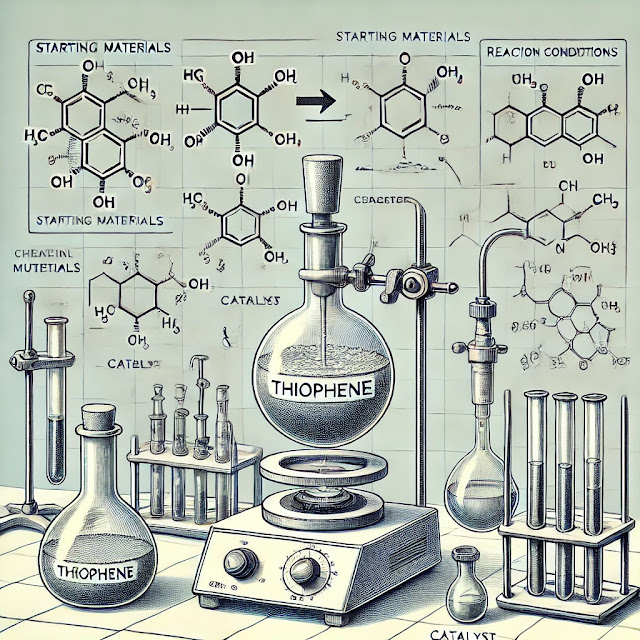Thiophene, a five-membered aromatic sulfur-containing heterocycle, can be prepared through the Paal-Knorr synthesis. This method is commonly used to synthesize thiophene derivatives and is considered a classic route for thiophene preparation.
Paal-Knorr Synthesis of Thiophene
Reaction: The Paal-Knorr synthesis involves the cyclization of 1,4-dicarbonyl compounds (such as 1,4-diketones) with a sulfur source, often phosphorus pentasulfide (P₂S₅) or elemental sulfur. The reaction yields a thiophene ring.
Example Reaction:
- Starting Material: A 1,4-diketone, such as 2,5-hexanedione.
- Reagent: Phosphorus pentasulfide (P₂S₅) or elemental sulfur (S).
- Product: Thiophene (or a substituted thiophene if starting from substituted diketones).
The reaction can be summarized as:
Mechanism Outline:
- The sulfur reagent reacts with the carbonyl groups in the diketone.
- Sulfur facilitates the cyclization by forming a thioketone intermediate.
- Cyclization leads to the formation of the thiophene ring, releasing water as a by-product.
Example Reaction Scheme:
For a simple thiophene:
The Paal-Knorr synthesis is efficient and widely applicable, especially for creating various substituted thiophenes by using appropriately substituted diketones.













0 Comments
Thanks for your feedback, ll get back to you soon